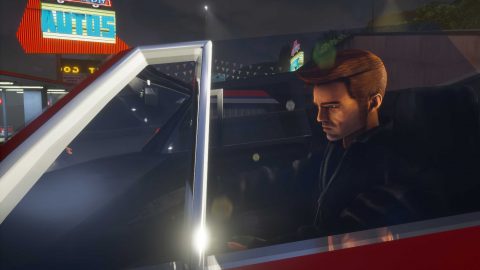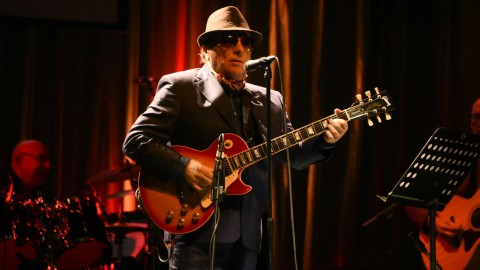
“There’s about 300 games released on Steam every week”, I’m sombrely informed by Stanislas Jun Peyrat, representing Skábma: Snowfall’s publisher. He tells me this to illustrate the importance of wishlisting in an era of constant market saturation, but it speaks to a wider point: representation matters, and seeking it in the narrow spaces between the louder, more numerous voices of others is a matter of survival.
- READ MORE: Brony bangers and fanatic fandoms, meet The Living Tombstone – the internet’s biggest gaming band
The Sámi people are an indigenous group hailing from the northern edge of continental Europe. Their territory, Sápmiland, curls along the Norwegian coast, stretching down to frost the tips of Sweden, Finland, and Russia. They have parliaments, but no state. They number around 100,000. Nine of their languages are considered endangered, a tenth is already lost. You most likely know their territory as Lapland, and would associate it with a certain Christian festival.
Keeping this culture alive is, as the game’s writer Eira-Teresá Joret Mariánná puts it, a challenging and stressful task made harder and harder by the outside world. Skábma: Snowfall is part of what she hopes will be a wider movement to create new Sámi stories, in modern formats, so that younger generations can “reclaim the culture and renew it on their own terms.” Liberating Sámi traditions from the spoken word, and placing them at the heart of a video game with global reach, is quite the call to action.

The result plays something like a Zelda game – elemental spirits plucked straight from Sámi mythology imbue the main character, Áilu, with special abilities. For example, The Owl grants the power of air, for soaring leaps and quick forward dashes. The Bear has dominion over earth, for altering the environment to open new paths through the world. Áilu himself is a fledgling Noaidi shaman, those responsible for mediating between the physical and spiritual realms.
“Pretty much everything started with the idea that we want our protagonist to be the most powerful character in the community. So of course it was a no brainer that the main character should be someone who is becoming a Noaidi. They were the healers and protectors of our villages. And that brought the idea of using the Noaidi drum as a mechanic.”
The Noaidi drum is crucial to proceedings – a small, rune-covered skin instrument known as a goavddis, traditionally used by the Noadi to roam the spirit realms, predict the future, and divine the best places to hunt. It’s used by the game in much the same manner, as the player’s connection to mysterious energies that reveal, and create, the path ahead.
“It wasn’t an easy decision to make, but it was a fast decision to make” declares Sahin Cengiz, Skábma’s lead designer. “To have that drum, and those familiar spirits as part of the story and the gameplay mechanics. We were already talking about that before this company was founded, because it felt good for a video game and representative of the culture.”

The goavddis’ significance cannot be overstated. As we speak, the Sámi are petitioning Denmark’s Queen Margrethe to return one such drum to them, which has been the property of the Danish National Museum for many decades, after having been confiscated as an article of witchcraft by the royal family themselves following a spate of witch trials in the late 1600s. Few of the drums are known to still exist. Unsurprisingly, the British Museum has one. It serves as the basis of Skábma’s game mechanics, but more importantly, a symbol of the Sámi’s struggle for survival in a world built by centuries of rampant colonialism. The runes they carry echo the irrevocable volumes of Sámi history that have disappeared; their meanings long lost to time.
“We talked a lot about what time period to set the game in”, recalls Mariánná. “We decided it was going to be around the 18th century. We had no idea where the drums were, and the religion was pretty much destroyed during the 17th century. We wanted this game to be around a hundred years after that. So the culture was pretty much gone and it was just a memory and everyone starts to forget”.
Sahin continues. “It’s hard to take one specific thing and make it into a game. Like any spoken stories, tales told on a campfire stop, there are different versions and a lot of pieces missing that mean we might not know the full story”.

It is in these gaps that Mariánná’s story is told. “We’re using what is there already, and just imagining things in a new way”, she explains. “These old stories, they leave so much open, you don’t know what happens between this event and that event. So that is how the story is structured. In our case we’re asking ‘what if the stars would fall?”.
Representing your culture to the world at large, and faced with the prospect that your interpretation of it be the first impression for many, must come with a weight of responsibility. “I think about it all the time. I try to keep it as true as I can, but also create the story I want to create about my people. Of course one has to understand that none of us are walking and talking Wikipedias of our culture.”
“We want it to be authentic” offers Sahin. “For anyone in the project who is not Sámi, Mariánná has brought a library full of stuff to read. It’s super important that everyone in the team does research.”
It’s difficult to quite get your head around the importance of representation when you’re part of a culture that has it in abundance. Of all Skábma’s goals as a project, simply giving the Sámi a moment in the spotlight yields the most immediate sense of achievement. “There was a comment from someone who saw the trailer and they said that they cried because it was the first time they’d heard Sámi language in a video game. At that point, I felt like we’d accomplished something. I forgot that we had to make the game there, that there’s still a job to do!”.

Jokes aside, the team at Red Stage is under no illusions about that. Skábma’s reach as a cultural document is irrevocably tied to its success as an entertainment product. A 30 minute slice was recently, temporarily, available on Steam; enough to get a sense, but little to offer any insight into how it might go down with a global public.
I wonder aloud if Zelda and Fable were direct influences. Sahin finds the idea mildly unsettling: “It’s still weirdly scary when someone mentions games like Zelda. But in the end, when we think about what we want our game to feel and look like, we are not looking at games so much as we are looking into Nordic nature. What is the experience of hiking in Lapland? How can we get that kind of an experience into a video game?” Mariánná agrees. “I try to sneak in my childhood memories of places and trees and all that. So hopefully it works.”
As a work of cultural preservation, and a signal to the world that the Sámi are here, Skábma: Snowfall has its work cut out for it. It also has to be a compelling narrative adventure that finds a global audience. No small feat, but Sahin has faith in the team’s work. “I think we have a freaking fantastic game coming out here and I hope people find it, and that what we’re aiming to do translates to anyone who plays it”.
Mariánná hopes, above all else, to inspire: “the gamers themselves? They understand that not all games have to be the same, and that diversity in games is a very good thing. You learn a lot from other cultures while playing games with characters that are not necessarily familiar to you and the cultures are not familiar to you.”
For a culture to be able to make art about itself should not be a matter of privilege. “I personally would like game developers around the globe, especially in the indigenous communities, to get the courage they need to make their own games. To see that their culture matters, and there is a demand for it.”
Skábma: Snowfall is coming soon.
The post How Skábma: Snowfall is Trying to Save a Culture appeared first on NME.










